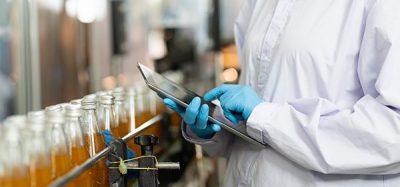To what extent do microbial enzymes affect the shelf life of food of animal origin?
- Like
- Digg
- Del
- Tumblr
- VKontakte
- Buffer
- Love This
- Odnoklassniki
- Meneame
- Blogger
- Amazon
- Yahoo Mail
- Gmail
- AOL
- Newsvine
- HackerNews
- Evernote
- MySpace
- Mail.ru
- Viadeo
- Line
- Comments
- Yummly
- SMS
- Viber
- Telegram
- Subscribe
- Skype
- Facebook Messenger
- Kakao
- LiveJournal
- Yammer
- Edgar
- Fintel
- Mix
- Instapaper
- Copy Link
Posted: 1 June 2009 | Dr Peggy Braun, Institute of Food Hygiene, Veterinary Faculty, University of Leipzig | No comments yet
Increasing interest by consumers, producers and retailers in food safety, supported by several regulations of the European Commission (e.g. EC-regulation 178/2002; EC-2073/2005 amended by EC-regulation 1441/2007), gives accurate shelf-life determination of products a new consequence. Although there is rapid progress in food processing and new concepts such as predictive microbiology have found practical applications, differences between the predicted and actual shelf-life have to be noted. The reasons may be related to the wide range of reactions which cause food spoilage. According to EC-regulation 178/2002 (article 14, 2b, 5), spoiled products have to be considered as unsafe and as unfit for human consumption. In that case, food shall not be placed on the market.
Increasing interest by consumers, producers and retailers in food safety, supported by several regulations of the European Commission (e.g. EC-regulation 178/2002; EC-2073/2005 amended by EC-regulation 1441/2007), gives accurate shelf-life determination of products a new consequence. Although there is rapid progress in food processing and new concepts such as predictive microbiology have found practical applications, differences between the predicted and actual shelf-life have to be noted. The reasons may be related to the wide range of reactions which cause food spoilage. According to EC-regulation 178/2002 (article 14, 2b, 5), spoiled products have to be considered as unsafe and as unfit for human consumption. In that case, food shall not be placed on the market.
Increasing interest by consumers, producers and retailers in food safety, supported by several regulations of the European Commission (e.g. EC-regulation 178/2002; EC-2073/2005 amended by EC-regulation 1441/2007), gives accurate shelf-life determination of products a new consequence. Although there is rapid progress in food processing and new concepts such as predictive microbiology have found practical applications, differences between the predicted and actual shelf-life have to be noted. The reasons may be related to the wide range of reactions which cause food spoilage. According to EC-regulation 178/2002 (article 14, 2b, 5), spoiled products have to be considered as unsafe and as unfit for human consumption. In that case, food shall not be placed on the market. Spoilage can be defined as any change which renders a food product unacceptable for human consumption1. Deteriorations of products also result in significant economic consequences; Lund et al.2 estimated that approximately one-third of the world’s food production is lost annually as a result of microbial spoilage. Microbial spoilage is caused by the growth and metabolic activity of so-called specific spoilage organisms (SSO), a term which was introduced by Dalgaard3. At first, the low-molecular nutrients in foodstuff are used as an energy source for these microorganisms and lead, for example, to massive growth associated with formation of superficial bacteria colonies, yeasts or moulds. Furthermore, they cause viscous, greasy surfaces, turbidity of liquids, discoloration or typical off-flavours of products. The substantial product deviations are frequently induced by enzymatic hydrolysis of food ingredients. Many of them are attributed to the effects of extracellular microbial proteases, lipases, carbohydrases and oxidoreductases. In general, the synthesis of enzymes follows the schema of protein biosynthesis consisting of transcription and translation that convert the genetic information of the DNA into protein. Extracellular enzyme or exoenzymes are released by cells after their synthesis and found free in the surrounding medium. In principal, not all enzymes will be excreted; some will remain intracellular or bound to the cell. The effects of so-called endogenous or intracellular enzymes, which have the ability to be active after cell death or cell destruction, are of marginal importance for the mechanism of microbial spoilage of food. Potential spoilage organisms, which have the ability to excrete microbial enzymes, are primarily found in low numbers in foodstuff. Depending on the environmental conditions in a given food, they could grow faster than the remaining microflora during shelf life and eventually produce the metabolites to induce the typical off flavours. Studies verify that there is a surprisingly high rate of enzymatic active flora in foodstuff4; for example in trout (median values), a total viable count of 3.5×105 cfu/g containing a number of proteolytes and lipolytes of 2.6×105 cfu/g. The following species have to be taken into consideration as significant spoilage organisms: pseudomonas, aeromonas, acinetobacter, alcaligenes, brochothrix, micrococcus, staphylococcus, lactobacillus, yeasts and moulds, as well as species of aerobic and anaerobic spore forming organisms. In heated sausage products, predominantly enzymatic active aerobic sporulating organisms can be found. In fresh fish, the flora almost completely consists of lipolyts with an explicit fraction of psychrotolerant proteolytes (species of aeromonas, pseudomonas). In pasteurised milk, particularly proteolytic active pseudomonas and aerobic spore forming organisms can be detected. However, in general these results for the amount of causative organisms or storage time don’t allow any indication of a ‘limit value,’ which exceed leads in all probability to spoilage effects. Typical examples for product-specific and germ-specific divergences in food are the sweet curdling and bitter flavour in milk caused by some proteolytic bacillus species (mainly Bacillus cereus), the superficial putrefaction of refrigerated meat caused by Proteus ssp. and the pseudomonas-acinetobacter-moraxella-association, the degradation of meat close to bones (‘bone taint’) caused by Clostridium putrefaciens and Clostridium algidicarnis, the flat-sour spoilage of tinned food caused by carbohydrate-splitting bacillus species and the white putrefaction in cheese caused by proteolytic clostridium species. Because of its multi-causality, the detection of food spoilage or the exact determination of shelf life is difficult. Up to now, the methods of determining the total viable count or the count of psychrotolerant organisms are used. Both parameters deliver retrospective information and do not give any data on the metabolic activities of the microorganisms and are therefore of limited value. Additionally, sensory examination in context with texture profile analysis is used. Chemical analysis is predicted to be a more objective addition for the assessment of spoilage, for example by determining free fatty acids or volatiles such as TVB-N (Total Viable Basic Nitrogen for fish). Some disadvantages of these methods are that there is not yet a limit value which can be used and it can not be practiced universally. One method which has attracted attention in the last few years is the detection of volatile metabolites via many different variants of gas chromatography. For fish, seafood and milk, the methods were already established. Particularly interesting in this context is the development of ‘electronic sensing/nose’ or ‘e-sensing’ technologies. When in contact with volatile compounds, the sensor of the detection system react, a specific response is recorded and data are then computed based on statistical models. The successful application of these tools for detection in vacuum-packed beef, poultry packed in modified atmosphere, cereals, milk and graved salmon is described by several research groups. To reduce the significant loss of revenue to the food industry initiated by spoilage processes, the results of an international collaboration (FAIR CT98-4083 project: Predictive modelling of food spoilage) and a national project as a newer approach to ensure safe and stable products are introduced. The objective of both projects was to demonstrate that food spoilage can be modelled as a predictive capability and to identify where food spoilage organisms interact. The EU-project allowed us to generate data on the enzyme production during the growth of main groups of spoilage-causing bacteria including Pseudomonas spp., Brochotrix thermospacta, Bacillus spp., Enterobacteriaceae and yeasts under the combined influence of various pH values (from 4.0 to 7.5), temperatures (from two to 20°C) and water activities (from 0.95 to 0.98). Growth models for all the pools investigated and valid for perishable foods were developed, including in most cases a wider range of environmental conditions compared to already existing models5,6,7. Adequate databases on enzyme production are available. The results were validated and verified using different kind of food (meat, milk products and vegetables). Because of the national project (funded by Deutsche Forschungsgemeinschaft, DFG), two linear mathematical models (‘predictive enzymology’ as excel sheets) using the method of Baranyi et al.8, are available which have been verified and validated in milk. To describe the enzymatic activity in food, proteases and lipases of 55 spoilage-causing bacterial strains of 13 different species were produced under optimal conditions (incubation of 72 hour in fat and protein enriched nutrient broth at optimal temperatures) and measured by a modified agar diffusion test. Tween, tributyrin, gelatine and casein were used a substrates. In order to investigate hydrolytic effects in heated products, the bacteria-free enzyme-containing filtrates were also tested after using different heating programs (60°C / 60 minutes, 65°C / 30 minutes, 71°C / 15 minutes, 75°C / five minutes). One model helps to predict the effects of both untreated and heated extracellular lipolytic and proteolytic enzymes of 13 species including pseudomonads, aeromonas, bacilli, staphylococci, Proteus, Micrococcus luteus, Clostridium perfringens and Serratia marcescens over a period of 96 hours9 within a similar matrix of environmental conditions (temperature from two to 37°C, pH-values from 4.0 to 7.3 and water activities from 0.8 to 0.98). An example for the activity of Aeromonas hydrophila-proteases is given in Figure 1. The critical line indicates the proteolytic activity when sensory changes will become obvious in UHT-milk based on the results of the verification in milk. Another model focuses on extracellular lipolytic enzymes synthesised by Pseudomonas aeruginosa, Pseudomonas fluorescens, Aeromonas hydrophila, Staphylococcus aureus and Serratia marcescens within a temperature range from -2 to +7 °C, pH-values from 4.0 to 6.3 and water activities from 0.95 to 0.995. It makes predictions possible over a period of 38 days10. Access to both models on enzymatic activities for selected spoilage organisms is provided by the Institute of Food Hygiene, Faculty of Veterinary Medicine, University of Leipzig (http://www.vmf.uni-leipzig.de/ik/wlebensmittelhygiene). Enzymatic activity, specifically reduced temperature, water activity and pH-values decrease or inhibit enzyme activity / synthesis of all tested enzymes. Nevertheless, surprisingly high activities were observed at chilling temperatures e.g. for lipases and proteases of Pseudomonas spp., Aeromonas and Bacillus strains. It seems that synthesis of enzymes by bacteria at unfavourable environmental conditions guarantees survival or use of nutrients because the enzyme synthesis is slightly increasing from pH 7.5 to pH 5.5. At a lower pH (4.5), the bacteria were not able to synthesise proteases and they grow more slowly. Heating of microbial enzymes results in a reduction of their activity but complete inhibition is not achieved. Pseudomonas spp., Aeromonas hydrophila and Serratia marcescens spp. particularly secrete very stable proteolytic enzymes, confirming observations reported earlier by other authors11,12,13 described for these strains. Lipases of Pseudomonas spp., Staphylococcus epidermidis and Aeromonas hydrophila have also to be assessed as heat resistant. Similar results presented for pseudomonads14,15 and for Aeromonas16. Finally, it can be concluded that for an accurate shelf-life determination, the activity of extracellular enzymes of spoilage bacteria need to be taken in consideration. Results indicated that the range of these enzymes can be much higher than the range of the bacterial growth.
References
- Hayes, P.R. 1985. Food Microbiology and Hygiene. Elsevier, London, 80-139.
- Lund, B. M., Baird-Parker, A. C., Gould, G. W. 2000. “The Microbiological Safety and Quality of Foods.” Aspen Publishers, Inc. Gaithersburg, Maryland, USA.
- Dalgaard, P. 1995. Qualitative and quantitative characterisation of spoilage bacteria from packed fish. Int. J. Food Microbiol. 26, 319-333.
- Braun, P., Fehlhaber, K. 2001. Quantitatives Vorkommen von Lipolyten und Proteolyten in Lebensmitteln tierischer Herkunft. Dtsch. Tierärztl. Wschr. 108, 371-375.
- Braun, P., Sutherland, J.P. 2004a. Predictive modelling of growth and enzyme synthesis and activity by Yarrowia lipolytica, Zygosaccharomyces bailii and Pichia anomala. Food Microbiol. 21, 459-467.
- Braun, P., Sutherland, J.P. 2004b. Predictive modelling of growth and enzymatic synthesis and activity by a cocktail of Brochothrix thermosphacta. Int. J. Food Microbiol. 95, 169-175.
- Braun, P., Sutherland, J.P. 2005. Predictive modelling of growth and enzymatic synthesis and activity by a cocktail of selected Enterobacteriaceae and Aeromonas hydrophila. Int. J. Food Microbiol. 105, 257-266.
- Baranyi, J., Roberts, T. A., McClure, P. J. 1993. A non-autonomous differential equation to model bacterial growth. Food Microbiol. 10, 43-59.
- Braun, P., Fehlhaber, K. 2002. Combined effect of temperature, aw, and pH on enzymatic activity of spoilage-causing bacteria. Milchwiss. 57, 134-136.
- Braun, P., Fehlhaber, K. 2003. Predictive modelling of the combined effect of low temperature, aw, and pH on the activity of bacterial lipases. Milchwiss. 58, 260-262.
- Griffiths, M. W., Phillips, J. D., Muir, D. D. 1981. Thermostability of proteases and lipases from a number of species of psychrotrophic bacteria of dairy origin. J. Appl. Bacteriol. 50, 289-303.
- Nieto, T. P., Ellis, A. E. 1986. Characterization of extracellular metallo- and serine-proteases of Aeromonas hydrophila strain B51. J. Gen. Microbiol. 132, 1975-1979.
- Mitchell, G. E., Ewings, K. N., Partley, J. P. 1986. Physicochemical properties of proteinases from selected psychrotrophic bacteria. J. Dairy Res. 53, 97-115.
- Sztajer, H., Borkowski, J., Sobiech, K. 1991. Purification and some properties of Pse udomonas fluorescens lipase. Biotechnol. Appl. Biochem. 13, 65-71.
- Dring, R., Fox, P. F. 1983. Purification and characterization of a heat-stable lipase from Pseudomonas fluorescens AFT 29. Irish J. Food Sci. Technol. 7, 157-171.
- Kalogridou-Vassiliadou, D. 1984. Lipolytic activity and heat resistance of extracellular lipases of some Gram-negative bacteria. Milchwiss. 39, 601-603.







